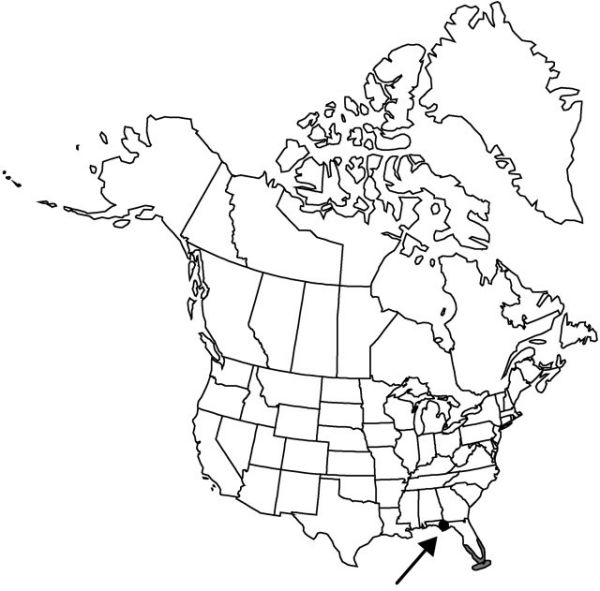Difference between revisions of "Hymenocallis latifolia"
Fam. Nat. Syn. Monogr. 4: 168. 1847.
FNA>Volume Importer |
FNA>Volume Importer |
||
| Line 15: | Line 15: | ||
|name=Hymenocallis caymanensis | |name=Hymenocallis caymanensis | ||
|authority=Herb | |authority=Herb | ||
| − | }}{{Treatment/ID/Synonym | + | }} {{Treatment/ID/Synonym |
|name=Hymenocallis collieri | |name=Hymenocallis collieri | ||
|authority=Small | |authority=Small | ||
| − | }}{{Treatment/ID/Synonym | + | }} {{Treatment/ID/Synonym |
|name=Hymenocallis keyensis | |name=Hymenocallis keyensis | ||
|authority=Small | |authority=Small | ||
| − | }}{{Treatment/ID/Synonym | + | }} {{Treatment/ID/Synonym |
|name=Hymenocallis kimballiae | |name=Hymenocallis kimballiae | ||
|authority=Small | |authority=Small | ||
| Line 39: | Line 39: | ||
|elevation=0 m | |elevation=0 m | ||
|distribution=Fla. | |distribution=Fla. | ||
| − | |discussion=<p>The long perianth tube in Hymenocallis latifolia contrasts sharply with the short, funnelform staminal corona. This species is a yard favorite throughout Florida.</p> | + | |discussion=<p>The long perianth tube in <i>Hymenocallis latifolia</i> contrasts sharply with the short, funnelform staminal corona. This species is a yard favorite throughout Florida.</p> |
|tables= | |tables= | ||
|references= | |references= | ||
| Line 63: | Line 63: | ||
|publication year=1847 | |publication year=1847 | ||
|special status= | |special status= | ||
| − | |source xml=https://jpend@bitbucket.org/aafc-mbb/fna-data-curation.git/src/ | + | |source xml=https://jpend@bitbucket.org/aafc-mbb/fna-data-curation.git/src/8f726806613d60c220dc4493de13607dd3150896/coarse_grained_fna_xml/V26/V26_563.xml |
|genus=Hymenocallis | |genus=Hymenocallis | ||
|species=Hymenocallis latifolia | |species=Hymenocallis latifolia | ||
Revision as of 16:45, 18 September 2019
Bulb nonrhizomatous, forming numerous bulblets, enlarging with age, 4–8 × 2–5 cm; basal plate 2–4 cm; neck 4–6 cm; tunic grayish brown. Leaves evergreen, numerous, arching outwards, spreading distally, 5–10 dm × 4–9 cm, coriaceous; blade broadly liguliform, gradually tapering proximally, apex subacute to acute. Scape 4–10 dm, slightly compressed, glaucous; scape bracts 2, enclosing buds, 4–7 × 1.5–2.5 cm; subtending floral bracts 4–5 cm × 10–15 mm. Flowers 9–15, opening sequentially, fragrant; perianth tube green, 9–20 cm; tepals extending nearly horizontally, reflexed distally, white, 7.5–13 cm × 4–6 mm; corona white with small green eye, funnelform, 2–3 × 3–4 cm, margins between free portions of filaments wavy, without prominent projections; free portions of filaments inserted on flat base, slightly incurved, green except becoming white near insertion, 4–6 cm; anthers 1.2–2 cm, pollen orange; ovary ovoid, 0.9–1.6 cm × 5–10 mm, ovules 2 per locule; style green in distal 1/2, fading to white proximally, 19–23 cm. Capsules subglobose, ca. 3 × 3 cm. Seeds obovoid, 1.8–2.4 × 1.4–1.8 cm. 2n = 46, 70.
Phenology: Flowering summer.
Habitat: Coastal dunes, sand ridges, edges of hammocks and flatwoods, mangrove swamps of southern Florida peninsula and keys, rarely disjunct along coastal nw Florida and Gulf coastal states
Elevation: 0 m
Discussion
The long perianth tube in Hymenocallis latifolia contrasts sharply with the short, funnelform staminal corona. This species is a yard favorite throughout Florida.
Selected References
None.
